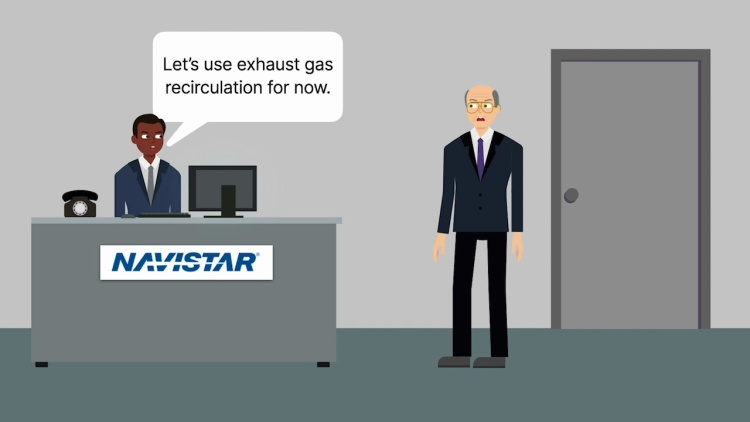Mack Trucks, Inc. v. Environmental Protection Agency
United States Court of Appeals for the District of Columbia Circuit
682 F.3d 87 (2012)
- Written by Kathryn Lohmeyer, JD
Facts
The Environmental Protection Agency (EPA) (defendant) required manufacturers to drastically reduce the nitrogen-oxide emission levels of heavy-duty diesel engines within a nine-year window. Mack Trucks, Inc. (Mack) (plaintiff) and most other manufacturers complied by investing heavily in a new technology to achieve the goal. However, Navistar, Inc. (Navistar) used a different technology, which failed to achieve the target emission levels by the EPA’s deadline. Navistar was able to continue producing and selling its non-compliant engines after the deadline by using a reserve of emission credits. Eventually, Navistar began to run out of credits. Without providing for notice and comment, the EPA issued an interim final rule (IFR) that permitted Navistar to continue producing non-compliant engines in exchange for Navistar’s payment of a financial penalty of $1,919 per engine. Mack petitioned the United States Court of Appeals for the District of Columbia Circuit for review of the EPA’s issuance of the IFR. Navistar intervened on behalf of the EPA. The EPA admitted that it had issued the IFR for Navistar’s benefit, but argued that the failure to provide for notice and comment was excused by the good-cause exception under the Administrative Procedure Act (APA), 5 U.S.C. § 553(b)(B).
Rule of Law
Issue
Holding and Reasoning (Brown, J.)
What to do next…
Here's why 899,000 law students have relied on our case briefs:
- Written by law professors and practitioners, not other law students. 47,000 briefs, keyed to 994 casebooks. Top-notch customer support.
- The right amount of information, includes the facts, issues, rule of law, holding and reasoning, and any concurrences and dissents.
- Access in your classes, works on your mobile and tablet. Massive library of related video lessons and high quality multiple-choice questions.
- Easy to use, uniform format for every case brief. Written in plain English, not in legalese. Our briefs summarize and simplify; they don’t just repeat the court’s language.





